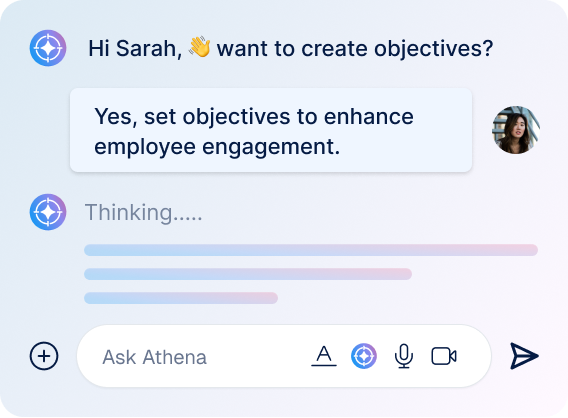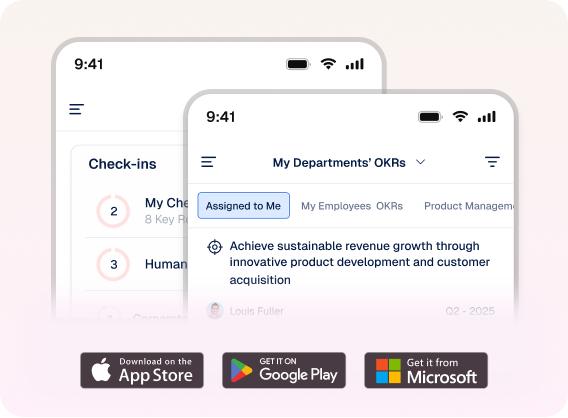TLDR
Banks struggle to connect their digital transformation investments to actual business results, leading institutions use the Balanced Scorecard framework to bridge this gap. By tracking Financial, Customer, Internal Process, and Learning & Growth metrics together, banks can navigate fintech competition, regulatory demands, and customer expectations while delivering measurable ROI on their strategic initiatives.
Despite investing billions in digital transformation, most banks can’t clearly connect their technology spending to business outcomes. It’s like buying expensive fitness equipment but never checking if you’re actually getting healthier. This disconnect is killing banks in 2025. While traditional institutions struggle to prove their digital investments work, fintech startups have laser-focused strategies and crystal-clear metrics. Successful banks now use the Balanced Scorecard framework to connect every dollar spent to measurable results.
Why are Banks Struggling?
The banking world has changed dramatically. Delloite recent report suggests that today’s challenges aren’t just about interest rates and loan defaults anymore:
1. Digital Disruption Everywhere
- Fintech companies like Chime and Revolut are stealing younger customers
- Big Tech (Apple Pay, Google Wallet) is muscling into payments
- Cryptocurrency and DeFi platforms are changing how people think about money
2. Regulatory Pressure Intensifying
- ESG (Environmental, Social, Governance) reporting requirements
- Stricter cybersecurity standards
- Open banking regulations are forcing data sharing
3. Customer Expectations Sky-High
- Instant everything (transfers, approvals, customer service)
- Personalized experiences like Netflix recommendations
- Seamless omnichannel experiences across mobile, web, and branch
4. Technology Investment Confusion
- Unclear ROI on digital transformation projects
- Difficulty measuring customer experience improvements
- Struggle to balance innovation with risk management
What is the state of Banking today?
A 2024 McKinsey study found that banks invest 8-12% of revenue in technology, but only 23% can clearly measure the business impact of these investments. This is where most banks get stuck. They know they need to change, but they can’t tell if their changes are actually working.
How the Balanced Scorecard can help.
The Balanced Scorecard is like your bank’s strategic map. Instead of just showing you where you are, like traditional financial reports, it shows you:
- Where you’re going (strategic objectives)
- The best route to get there (cause-and-effect relationships)
- Whether you’re making progress (leading and lagging indicators)
- What to do if you get off track (corrective actions)
The framework looks at four connected perspectives that tell your bank’s complete story:
1. Financial Perspective: “Are We Profitable?”
This covers traditional banking metrics, but with strategic context.
- Net Interest Margin (NIM): How much profit do you make on loans vs. deposits?
- Return on Assets (ROA): How efficiently do you use your assets?
- Cost-to-Income Ratio: Operating costs as a percentage of income
- Digital Revenue Share: Revenue from digital channels vs. traditional
- ESG Investment ROI: Returns on sustainable finance initiatives
Modern Banking Goal: Increase profitability while maintaining acceptable risk levels and meeting sustainability targets.
2. Customer Perspective: “Do Customers Love Us?”
This is where banks often fall short. You need to understand what creates lasting customer relationships in the digital age.
- Digital Adoption Rate: Percentage of customers using mobile/online services
- Net Promoter Score (NPS): Customer likelihood to recommend your bank
- Customer Lifetime Value (CLV): Total value a customer brings over time
- Average Response Time: How quickly you solve customer problems
- Cross-selling Success: Number of products per customer
Modern Banking Goal: Create seamless, personalized experiences that build loyalty and increase share of wallet.
3. Internal Process Perspective: “Are We Operationally Excellent?”
This covers how efficiently your bank operates behind the scenes.
- Loan Processing Time: Days from application to approval
- Digital Transaction Success Rate: Percentage of mobile/online transactions completed without errors
- Compliance Score: Meeting regulatory requirements
- Cybersecurity Incidents: Security breaches per quarter
- Process Automation Rate: Percentage of routine tasks automated
Modern Banking Goal: Optimize operations for speed, accuracy, and regulatory compliance while reducing costs.
4. Learning & Growth Perspective: “Are We Building Future Capabilities?”
This perspective focuses on your bank’s foundation for future success.
- Employee Digital Skills Score: Staff proficiency with new technologies
- Innovation Pipeline: Number of new products/services in development
- Technology Infrastructure Health: System uptime and performance
- Employee Engagement Score: How motivated and satisfied your staff are
- Training Investment per Employee: Money spent on skill development
Modern Banking Goal: Build capabilities that enable future innovation and competitive advantage.
How a Regional Bank Can Turn Things Around?
Let me share a hypothetical example of how a mid-sized regional bank used the Balanced Scorecard to transform its business:
The Challenge: Losing younger customers to fintech apps and struggling to prove ROI on their $3M digital transformation investment.
Their Balanced Scorecard Strategy:| Perspective | Objective | Key Metric | Target | Initiative |
|---|---|---|---|---|
| Financial | Increase digital revenue | Digital channel revenue share | 40% → 60% | Mobile banking enhancements |
| Customer | Attract younger customers | Customers under 35 | 25% → 40% | Student banking packages |
| Internal Process | Speed up account opening | Digital account opening time | 45 min → 5 min | Process automation |
| Learning & Growth | Build digital capabilities | Employee digital training hours | 0 → 20 hours/year | Comprehensive training program |
The Results (After 18 months):
- Digital revenue grew from 42% to 65% of total revenue
- Customers under 35 increased from 27% to 43%
- Account opening time dropped to 3 minutes
- Employee satisfaction scores increased by 35%
- Overall ROI: 340% on their digital transformation investment
Key Success Factor: The bank succeeded because they connected each investment to specific outcomes and tracked the cause-and-effect relationships monthly.
How to Build Your Banking Balanced Scorecard in 6 Easy Steps
Step 1: Define Your Strategic Priorities
Start with your biggest challenges. For most banks in 2025, these include:
- Competing with fintech companies
- Meeting regulatory requirements
- Improving customer experience
- Optimizing operational efficiency
Step 2: Choose Your Key Metrics
Select 3-4 metrics per perspective that directly relate to your strategic priorities. Don’t try to track
everything, focus on what matters most.
Pro Tip: Mix leading indicators (predict future performance) with lagging indicators
(show past results).
Step 3: Set Realistic Targets
Base your targets on:
- Industry benchmarks
- Your historical performance
- Available resources
- Market conditions
Step 4: Create Action Plans
For each metric, define:
- Who’s responsible
- What specific actions will improve the metric
- When you will review progress
- How you’ll adjust if you’re off track
Step 5: Implement Tracking Systems
Use digital tools to automate data collection and create real-time dashboards. Manual tracking won’t work in today’s fast-paced environment.
Step 6: Review and Adjust Monthly
Hold monthly scorecard reviews to:
- Analyze performance trends
- Identify early warning signs
- Adjust strategies based on results
- Celebrate wins and learn from misses
How the Four Perspectives Work Together
The Balanced Scorecard isn’t just four separate scorecards; it’s one integrated system where each perspective drives the others:
Learning & Growth investments (employee training, new technology) improve → Internal Processes (faster service, fewer errors) which enhance → Customer Experience (satisfaction, loyalty) leading to → Financial Results (revenue growth, profitability).
An Example: Investing in AI chatbot training for staff (Learning & Growth) → Reduces customer service response time by 60% (Internal Process) → Increases customer satisfaction scores from 7.2 to 8.9 (Customer) → Improves customer retention by 25%, adding $2M in annual revenue (Financial)
Common Challenges And How to Overcome Them
- Challenge 1: “Too Complex for Our Team”
The Problem: Your team feels overwhelmed by tracking multiple metrics across four perspectives.
The Solution: Start simple. Pick one metric per perspective and master that before adding more. Systems aren’t built in a day, and neither is strategic excellence. - Challenge 2: “We Don’t Have the Right Data”
The Problem: You realize you’re not tracking the metrics that matter most.
The Solution: Invest in data infrastructure first. You can’t manage what you can’t measure. Consider this a foundational investment, not an optional expense. - Challenge 3: “Results Take Too Long to See”
The Problem: Leadership expects immediate results from strategic initiatives.
The Solution: Focus on leading indicators that predict future performance. Show progress on process improvements while waiting for financial results. - Challenge 4: “Integration with Existing Systems”
The Problem: Your new scorecard doesn’t play well with existing reporting systems.
The Solution: Choose platforms designed for integration or plan for a phased technology upgrade. Don’t let perfect be the enemy of good.
The Balanced Scorecard is a dynamic strategic management system that equips UAE organizations with the clarity and agility needed to thrive in a rapidly evolving global landscape.Tweet
Technology: Your Balanced Scorecard Enabler
Manual scorecard tracking died in 2020. In 2025, successful banks use integrated platforms that:
Automate Data Collection
- Connect to core banking systems
- Pull customer satisfaction data automatically
- Integrate with HR systems for employee metrics
Provide Real-Time Dashboards
- Executive dashboards for leadership
- Department dashboards for managers
- Individual scorecards for employees
Enable Predictive Analytics
- Identify trends before they become problems
- Suggest corrective actions
- Forecast future performance
Support Collaboration
- Shared goal setting across departments
- Progress updates and comments
- Integration with communication tools
Try Profit.co Banced scorecard Software today.
The Case of Wells Fargo
Between 1997 and 1998, Wells Fargo implemented a balanced scorecard for their online financial services division (OFS). The OFS developed and supported services that aided customers in transacting via the Internet. Using a BSC, they hoped to better understand whether the results they were getting made strategic sense and where to prioritize new initiatives. They found:
- The average cost per customer dropped by 22%
- OFS gained an additional 250,000 customers
- OFS banking website downtime was reduced by 71%
The Future of Banking Performance Management
As we look ahead, the banks that will thrive are those that master the art of strategic measurement. The Balanced Scorecard isn’t just a reporting tool, it’s a competitive advantage.
Emerging Trends:
- AI-powered performance prediction
- Real-time strategy adjustment capabilities
- Customer journey integration with internal metrics
- ESG performance measurement becoming mandatory
The banks that start building these capabilities now will be the ones leading their markets in 2030.
Ready to transform your bank’s performance management? Here’s your 90-day action plan:
Days 1-30: Foundation
- Identify your top 3 strategic priorities
- Choose initial metrics for each perspective
- Assess your current data capabilities
- Form your scorecard implementation team
Days 31-60: Design
- Build your initial scorecard framework
- Set baseline measurements
- Define targets and action plans
- Choose your technology platform
Days 61-90: Launch
- Implement tracking systems
- Train your team
- Start monthly reviews
- Begin making data-driven decisions
Success Guarantee: Banks that properly implement Balanced Scorecards see measurable improvements and significant ROI.



